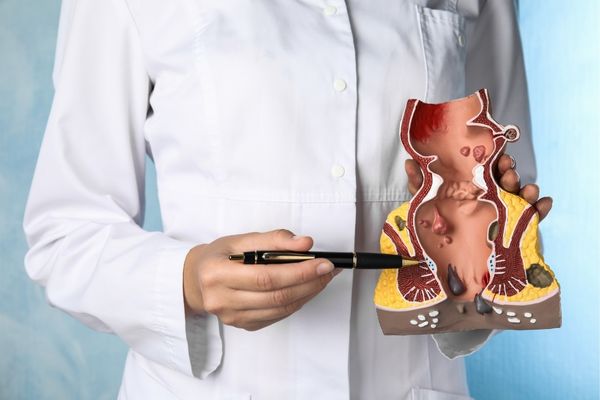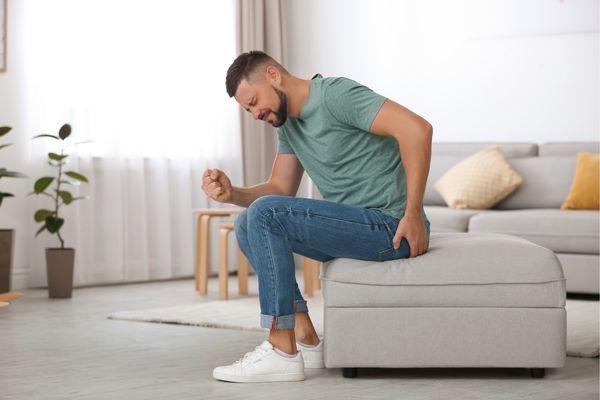Hemorrhoids, or hemorrhoids as it is popularly known, is a health problem that is extremely common in society but is often hesitant to talk about. This problem, which can significantly reduce the quality of life, is characterized by the enlargement and swelling of the veins in the anus. Fortunately, modern medicine offers many effective techniques for treating hemorrhoids.

Hemorrhoids, in its shortest definition, is the enlargement, swelling and prolapse of the veins located in the last part of the anal canal, rectum and anus. These vascular pads are anatomical structures that normally support fecal control. However, when the pressure applied to these veins increases for different reasons, their structure deteriorates and they take on a varicose-like appearance and hemorrhoid disease occurs.
Many people try to understand this situation with questions such as what hemorrhoids mean or what internal hemorrhoids are. In fact, these structures are present in everyone, and they become a problem when they enlarge and start to give symptoms. This can lead to complaints such as pain, bleeding, itching and swelling in the anus, which can negatively affect a person's daily life.
The severity of hemorrhoids varies depending on how dilated the veins are and the level of prolapse. While lifestyle changes and simple medical treatments are sufficient in the early stages, more detailed interventions may be required in advanced stages. Therefore, understanding what hemorrhoids are and the underlying mechanism is the first and most important step towards the right treatment.
Hemorrhoids are basically divided into two main groups according to their location: internal hemorrhoids and external hemorrhoids. This distinction is of great importance as it directly affects both the symptoms and the treatment techniques to be applied. Internal hemorrhoids occur when the veins in the rectum, above the starting line of the anus, dilate. Since the nerve endings in this area are less sensitive downwards, hemorrhoids are mostly painless.
The most obvious sign is bright red bleeding on toilet paper or in the toilet bowl during or after defecation. In advanced cases, these internal hemorrhoids can prolapse out of the anus with straining, which can be painful.
Hemorrhoid stages, which are graded in their own way, are also often used for internal hemorrhoids. At the same time, external hemorrhoids are caused by swelling of the veins under the skin around the anus. Because this area is rich in nerves, external hemorrhoids are often more painful. It is characterized by a tender swelling around the anus, itching and discomfort when sitting.
Hemorrhoids are basically divided into two main groups according to their location: internal hemorrhoids and external hemorrhoids. This distinction is of great importance as it directly affects both the symptoms and the treatment techniques to be applied. Internal hemorrhoids occur when the veins in the rectum, above the starting line of the anus, dilate. Since the nerve endings in this area are less sensitive downwards, hemorrhoids are mostly painless.
The most obvious sign is bright red bleeding on toilet paper or in the toilet bowl during or after defecation. In advanced cases, these internal hemorrhoids can prolapse out of the anus with straining, which can be painful.
Hemorrhoid stages, which are graded in their own way, are also often used for internal hemorrhoids. At the same time, external hemorrhoids are caused by swelling of the veins under the skin around the anus. Because this area is rich in nerves, external hemorrhoids are often more painful. It is characterized by a tender swelling around the anus, itching and discomfort when sitting.
Hemorrhoids are caused by increased pressure on the veins in the anal and rectal area. There are many factors that cause this increase in pressure and the disease is often triggered by a combination of multiple causes. The most common causes are chronic constipation and diarrhea. Excessive straining during defecation by an individual suffering from chronic constipation puts direct pressure on the veins in the area, causing them to dilate.
Likewise, chronic diarrhea irritates the anal area and strains the vascular pattern. Sitting on the toilet for long periods of time, especially with distractions such as phones or books, is another major risk factor that causes the veins in the anal canal to fill with blood and increase pressure.

Symptoms of hemorrhoids may vary depending on the type, location and level of hemorrhoids. Therefore, the answer to the question of what are the symptoms of hemorrhoids may vary from person to person. The most common symptom, which often brings patients to the doctor, is bleeding from the anus. Hemorrhoid bleeding is typically bright red in color and appears as a stain on toilet paper after defecation or as a drip in the toilet bowl.
This symptom is usually painless and is the most characteristic sign of internal hemorrhoids. In addition to bleeding, symptoms of internal hemorrhoids include a feeling of fullness during defecation and a feeling that the rectum is not emptying completely. If internal hemorrhoids protrude from the anus, this can cause wetness, discharge and itching.
Symptoms of external hemorrhoids are more often characterized by pain and discomfort. A tender swelling around the anus, pain that increases especially when sitting or during defecation, severe itching and burning sensation are common. Sometimes, if a blood clot forms in this swelling, the pain can become very severe and constant.
Both internal and external hemorrhoids can cause irritation and hygiene problems in the anal area, leading to chronic itching. The search for images of hemorrhoids or images of hemorrhoids is often driven by patients' attempts to make sense of their condition.
When hemorrhoid complaints begin, there are many techniques that can provide relief and relieve symptoms without the need for surgical intervention. The question of what is good for hemorrhoids is often asked, especially when pain and itching are high.
One of the most successful home remedies is hot water sitz baths. Sitting in warm to hot water in a basin or bathtub for 15-20 minutes several times a day helps to relax the muscles in the anal area, increase blood circulation and reduce pain.
This process ranges from simple measures to surgical interventions. Early stage hemorrhoids can be controlled and their symptoms can be eliminated, mostly with differences in lifestyle and diet. Basic habits such as choosing a diet with plenty of fiber, drinking at least 2-2.5 liters of water a day, exercising regularly and not postponing the need for toilet can stop the progression of hemorrhoids and relieve existing complaints.
Similarly for external hemorrhoids, symptomatic relief can be achieved with hot sitz baths and topical creams recommended by the doctor, and swelling and pain usually disappear within a few weeks.
One of the most annoying and persistent symptoms of hemorrhoids is anal itching. This itching is caused by the hemorrhoids themselves, mucus discharge caused by prolapsing hemorrhoids, or difficulties in maintaining hygiene of the area. What is good for hemorrhoid itching? The answer requires a multifunctional approach that addresses the underlying cause of the itching.
Preventing hemorrhoids is always easier and less costly than treating them. Hemorrhoid prevention methods are largely based on lifestyle differences that focus on keeping the digestive system healthy and reducing pressure in the anal area. The most basic preventive measure is to include enough fiber in your diet.
Aiming to consume 25-30 grams of fiber daily makes the stool soft and bulky, allowing it to pass through the intestines with ease. This eliminates the need to strain. Fresh fruits, vegetables, whole grains, oats and legumes are a great source of fiber. When increasing fiber intake, it is very important to drink plenty of water.
The period after hemorrhoid surgery is as important as the surgery itself for the success of the treatment and the comfort of the patient. Strictly following the doctor's recommendations in this process accelerates recovery and prevents possible complications. There are some important things to avoid during the healing process. First of all, any situation that may cause constipation should be avoided.
The first bowel movement after surgery can often be alarming, so it is important to keep stools soft. Your doctor will probably prescribe fiber supplements or laxatives. At this time, it is important to eat plenty of vegetables, fruit and water instead of processed and solid foods that are low in fiber. Straining during defecation should be avoided.
Last Blogs
Cookies are used on our website to improve user experience. For detailed information, you can review our Cookie Policy.